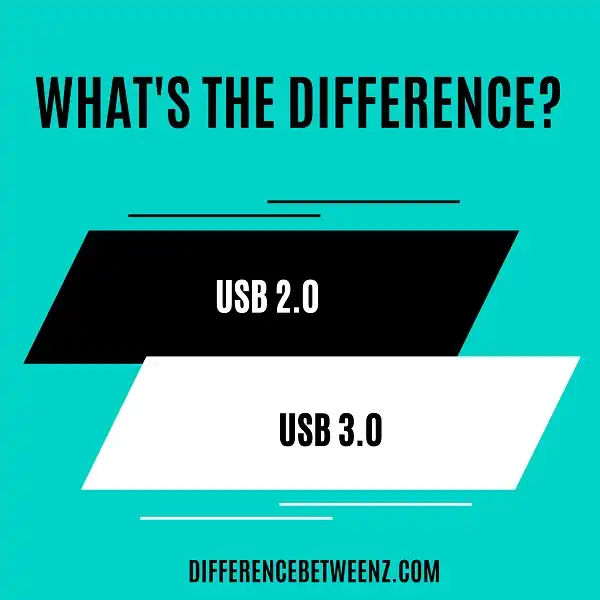USB 2.0 and USB 3.0 are both types of USB connectors, but they have different speeds. USB 2.0 can transfer data at 480Mbps, while USB 3.0 can transfer data at 5Gbps. This means that USB 3.0 is up to 10 times faster than USB 2.0! So if you need to transfer a lot of data quickly, you’ll want to use a USB 3.0 connector. Note that not all devices support USB 3.0 – make sure your device supports it before you buy a cable or adapter!
What is USB 2.0?
USB 2.0 is a high-speed data transfer protocol used for USB devices. It was released in April 2000, and it is backward compatible with USB 1.1. USB 2.0 can transfer data at up to 480 Mbps, which is 40 times faster than USB 1.1. USB 2.0 is also known as Hi-Speed USB.
What is USB 3.0?
USB 3.0 is the third major version of the USB standard for interfacing computers and electronic devices. The standard is maintained by the USB Implementers Forum (USB-IF). USB 3.0 was released in November 2008, in order to address the shortcomings of USB 2.0, such as its slower data transfer rate and power consumption. USB 3.0 has a data transfer rate of up to 5 Gbps, which is 10 times faster than USB 2.0. It also delivers more power to devices, which means that devices can be charged faster. In addition, USB 3.0 is backward compatible with USB 2.0, so it can be used with older devices and cables.
Difference between USB 2.0 and USB 3.0
USB 2.0 and USB 3.0 are both types of USB (universal serial bus) connectors. USB 2.0 was released in April 2000 and is still widely used today. USB 3.0 was released in November 2008 and is the newest standard. USB 2.0 has a transfer speed of 480 Mbps, while USB 3.0 has a transfer speed of 4,800 Mbps – that’s 10 times faster! USB 3.0 is also backward-compatible with USB 2.0, so you can use a USB 3.0 device with a USB 2.0 port. However, you won’t be able to take advantage of the faster transfer speeds unless both devices support USB 3.0.
Conclusion
While USB 2.0 is still widely used, it’s important to be aware of the differences between the two standards so you can make an informed decision when purchasing new devices or upgrading your current system. For most people, USB 3.0 will offer a better user experience with faster data transfer speeds and more bandwidth for simultaneous connections.


